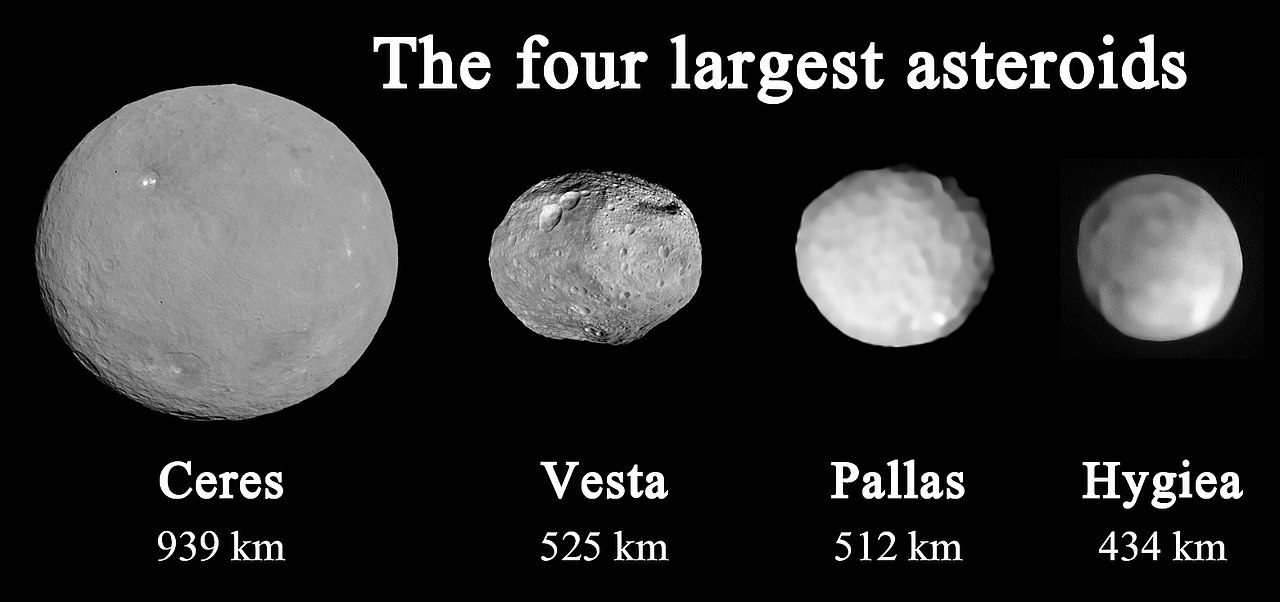Olympus Mons - Mars Volcano Mountain and Rheasilvia on 4Vesta

Did you know that Olympus Mons is the tallest mountain in our solar system. It is 2-1/2 times higher than Mount Everest is above sea level and has a height of over 72,000 feet. It is tied with Rheasilvia on the asteroid 4 Vesta as the tallest mountain currently discovered in the Solar System. (Rheasilvia is a crater and was likely created by an asteroid impact which has a central peak that rises 14 miles above the lowest measured part of the crater floor and the highest measured part of the crater rim is 19 miles above the crater floor low point).
As a shield volcano, Olympus Mons resembles the shape of the large volcanoes making up the Hawaiian Islands. The edifice is about 600 km (370 mi) wide. Because the mountain is so large, with complex structure at its edges, allocating a height to it is difficult. Olympus Mons stands 21 km (13 mi) above the Mars global datum[specify], and its local relief, from the foot of the cliffs which form its northwest margin to its peak, is over 21 km (13 mi - a little over twice the height of Mauna Kea as measured from its base on the ocean floor). The total elevation change from the plains of Amazonis Planitia, over 1,000 km (620 mi) to the northwest, to the summit approaches 26 km (16 mi). The summit of the mountain has six nested calderas (collapsed craters) forming an irregular depression 60 km (37 mi) × 80 km (50 mi) across and up to 3.2 km (2.0 mi) deep. The volcano’s outer edge consists of an escarpment, or cliff, up to 8 km (5.0 mi) tall (although obscured by lava flows in places), a feature unique among the shield volcanoes of Mars, which may have been created by enormous flank landslides. Olympus Mons covers an area of about 300,000 km2 (120,000 sq mi), which is approximately the size of Italy or the Philippines, and it is supported by a 70 km (43 mi) thick lithosphere. The extraordinary size of Olympus Mons is likely because Mars lacks mobile tectonic plates. Unlike on Earth, the crust of Mars remains fixed over a stationary hotspot, and a volcano can continue to discharge lava until it reaches an enormous height.
Being a shield volcano, Olympus Mons has a very gently sloping profile. The average slope on the volcano’s flanks is only 5%. Slopes are steepest near the middle part of the flanks and grow shallower toward the base, giving the flanks a concave upward profile. Its flanks are shallower and extend farther from the summit in the northwestern direction than they do to the southeast. The volcano’s shape and profile have been likened to a “circus tent” held up by a single pole that is shifted off center.
Due to the size and shallow slopes of Olympus Mons, an observer standing on the Martian surface would be unable to view the entire profile of the volcano, even from a great distance. The curvature of the planet and the volcano itself would obscure such a synoptic view. Similarly, an observer near the summit would be unaware of standing on a very high mountain, as the slope of the volcano would extend far beyond the horizon, a mere 3 kilometers away.

